Electronics Innovations: Shaping the Future of Technology
In the rapidly evolving technological landscape, electronics innovations have emerged as the cornerstone of modern progress. The integration of advanced electronics in various sectors has revolutionized industries, improved lives, and redefined the boundaries of human capability. This document explores the most significant innovations in electronics, their applications, and their potential to shape the future.
Buy from Amazon > Sound Bar, 60W Sound Bar for Smart TV, 5.0 Bluetooth Soundbar for TV, Wired & Wireless Soundbar with Volume Boost & Equalizer Mode,ARC/Optical/AUX Connection, 2 in 1 Detachable TV Sound Bar
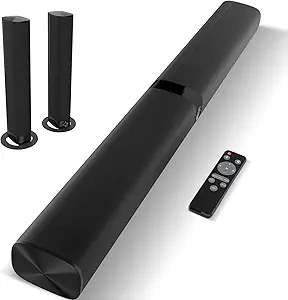
The Evolution of Electronics
The journey of electronics began with the invention of the vacuum tube in the early 20th century, followed by the development of the transistor, integrated circuits (ICs), and microprocessors. These foundational technologies laid the groundwork for modern electronic devices. The shift from analog to digital systems marked a pivotal moment, enabling unprecedented levels of precision, scalability, and efficiency.
Buy from Amazon > Google Audio Bluetooth Speaker – Wireless Music Streaming, Powerful Sound, Assistant Built-in, Wi-Fi and Bluetooth Connectivity, Smart Home Control, Stereo Pairing
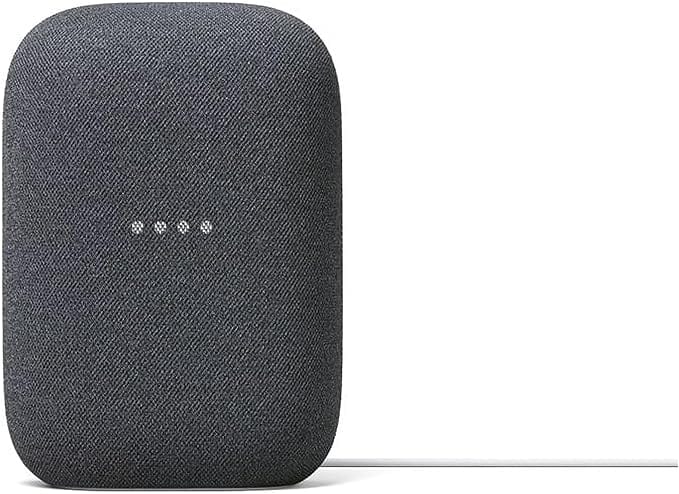
Key Innovations in Electronics
1. Semiconductor Technology
Semiconductors are at the heart of modern electronics. Advances in semiconductor manufacturing have led to smaller, faster, and more energy-efficient chips. Technologies like FinFET (Fin Field-Effect Transistor) and nanosheet transistors have pushed the limits of Moore’s Law, enabling the production of chips with billions of transistors.
Buy from Amazon > Smart Health Wristband, Wearable Activity & Fitness Tracker for Multi-Sport Mode, All-Day Automatic Continuous Monitoring of Health Data, Improve Sleep, Stress & Wellness, with Free App
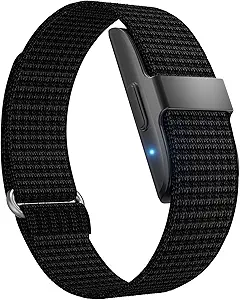
Emerging trends in semiconductors include:
- 3D Integrated Circuits: Enhancing performance by stacking layers of circuits vertically.
- Gallium Nitride (GaN) and Silicon Carbide (SiC): These materials are transforming power electronics with higher efficiency and reduced heat generation.
- Quantum Computing Chips: Pioneering a new era of computation by leveraging quantum mechanics.
Buy from Amazon > Apple Watch SE (2nd Gen) [GPS 40mm] Smartwatch with Midnight Aluminium Case with Midnight Sport Band S/M. Fitness and Sleep Trackers, Crash Detection, Heart Rate Monitor, Retina Display
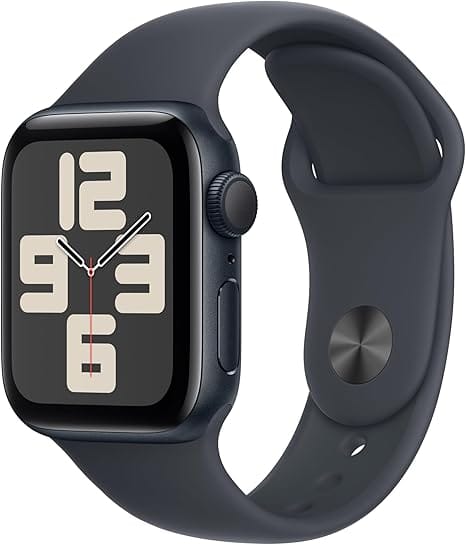
2. Wearable Electronics
Wearable devices have transformed personal health, fitness, and communication. Smartwatches, fitness trackers, and augmented reality (AR) glasses are examples of innovations that combine electronics with ergonomics and connectivity. Recent advancements include:
- Flexible and Stretchable Electronics: Enabling comfortable, body-conforming designs.
- Biosensors: Monitoring vital signs, glucose levels, and even hydration in real-time.
- Energy Harvesting: Extending battery life through solar or kinetic energy.
Buy from Amazon > Blackview Smart Glasses, 5.0 Bluetooth Sunglasses with Open Ear Speaker, Voice Assistant Compatible, Blue Light Blocking Lens
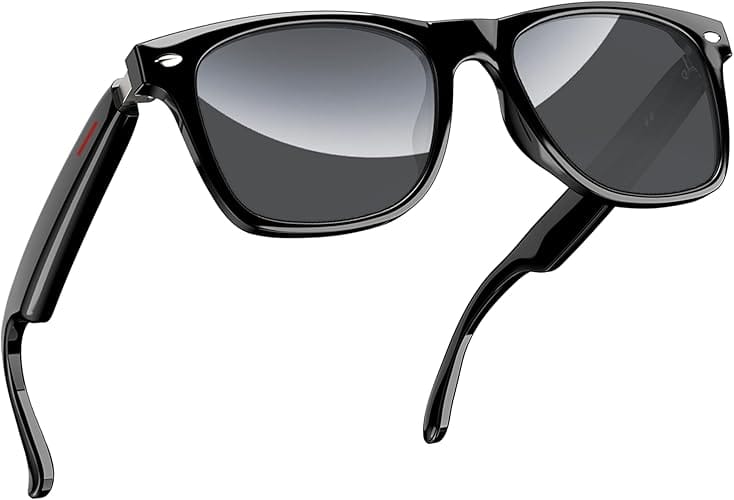
3. Internet of Things (IoT)
IoT represents a paradigm shift in connectivity, integrating electronics into everyday objects to create smart ecosystems. IoT devices use sensors, actuators, and communication modules to collect and share data. Key applications include:
- Smart Homes: Devices like thermostats, lights, and security cameras controlled remotely.
- Industrial IoT (IIoT): Optimizing manufacturing processes, predictive maintenance, and supply chain management.
- Healthcare: Remote patient monitoring and connected medical devices.
Buy from Amazon > Mini Projector, VISSPL Full HD 1080P Video Projector, Portable Outdoor Projector with Tripod, Kids Gift, Home Theater Movie Phone Projector Compatible with Android/iOS/Windows/TV Stick/HDMI/USB
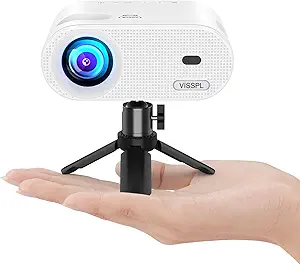
4. Artificial Intelligence (AI) and Machine Learning (ML)
The synergy between electronics and AI/ML is reshaping automation and decision-making processes. Specialized hardware like GPUs, TPUs (Tensor Processing Units), and neuromorphic chips is driving this transformation. Key advancements include:
- Edge AI: Enabling real-time processing on devices rather than relying on cloud-based systems.
- Neural Networks: Improved training and inference capabilities.
- AI in Robotics: Enhancing autonomous systems with advanced perception and decision-making.
Buy from Amazon > Mini Projector, Upgraded Bluetooth Projector with Screen, 1080P Full HD Portable Projector, Movie Projector Compatible with TV Stick Smartphone/HDMI/USB, indoor & outdoor use
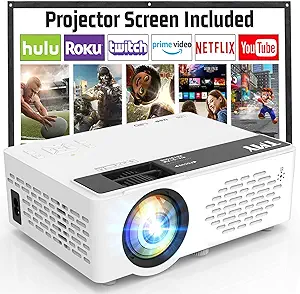
5. Energy Storage and Management
The demand for efficient energy storage systems has fueled innovation in batteries and power management technologies. Lithium-ion batteries dominate the market, but next-generation technologies are gaining traction:
- Solid-State Batteries: Offering higher energy density and safety.
- Supercapacitors: Providing rapid charging and discharging capabilities.
- Energy Harvesting Devices: Capturing ambient energy from light, heat, or motion.
Buy from Amazon > Mini Pocket Projector – Smart Portable Projector with Wifi and Blutooth : Built in Battery & Speaker, HD 1080p Support, Electric Focus & Auto Vertical Keystone for HDMI, USB, iPhone, Android Phones

6. Flexible and Printed Electronics
Flexible electronics enable lightweight, bendable, and durable devices. Printed electronics, produced using additive manufacturing techniques, offer cost-effective and scalable solutions. Applications include:
- E-Textiles: Integrating electronics into fabrics for wearable applications.
- Flexible Displays: Used in foldable smartphones and e-readers.
- Smart Packaging: Enhancing logistics with embedded sensors and indicators.
Applications Across Industries
1. Healthcare
Innovations in medical electronics have transformed diagnostics, treatment, and patient care. Examples include:
- Telemedicine: Allowing remote consultations and diagnostics.
- Wearable Medical Devices: Monitoring chronic conditions like diabetes and heart disease.
- Surgical Robots: Enabling minimally invasive procedures with high precision.
2. Consumer Electronics
Consumer electronics continue to define lifestyles and entertainment. Key innovations include:
- Smartphones: Advancements in processing power, camera quality, and connectivity.
- Gaming Consoles: Enhanced graphics and immersive experiences through VR/AR.
- Smart TVs: Integrating AI for personalized content recommendations.
3. Automotive Industry
Electronics innovations are driving the shift toward autonomous and electric vehicles (EVs). Notable advancements include:
- Advanced Driver Assistance Systems (ADAS): Enhancing safety with features like lane-keeping assist and adaptive cruise control.
- Battery Management Systems (BMS): Extending the range and lifespan of EV batteries.
- In-Vehicle Infotainment (IVI): Improving the user experience with connected interfaces.
4. Aerospace and Defense
Electronics are critical in aerospace and defense applications, where reliability and performance are paramount. Innovations include:
- Unmanned Aerial Vehicles (UAVs): Enabling reconnaissance and delivery missions.
- Satellite Electronics: Supporting communication, navigation, and Earth observation.
- Electronic Warfare Systems: Enhancing cybersecurity and strategic capabilities.
5. Renewable Energy
The integration of electronics in renewable energy systems has optimized energy generation and distribution. Examples include:
- Solar Inverters: Converting solar energy into usable electricity with high efficiency.
- Smart Grids: Managing energy flow and demand dynamically.
- Energy Storage Systems: Balancing supply and demand with grid-scale batteries.
The Future of Electronics Innovations
1. Quantum Electronics
Quantum mechanics is poised to revolutionize electronics with technologies like quantum dots, quantum cryptography, and quantum computers. These advancements promise unparalleled performance in computing, security, and imaging.
2. 5G and Beyond
The rollout of 5G networks is unlocking new possibilities for electronics. Key impacts include:
- Low Latency Applications: Enhancing real-time gaming, telemedicine, and autonomous systems.
- Massive IoT Connectivity: Supporting billions of interconnected devices.
- Enhanced Mobile Broadband: Enabling immersive AR/VR experiences.
3. Sustainability and Circular Electronics
As environmental concerns grow, sustainable electronics are becoming a priority. Innovations in this area include:
- E-Waste Recycling: Developing efficient methods to recover valuable materials.
- Eco-Friendly Materials: Using biodegradable and non-toxic components.
- Energy-Efficient Designs: Reducing power consumption and extending device lifespans.
4. Neuroelectronics
The fusion of electronics with neuroscience is unlocking new frontiers in brain-computer interfaces (BCIs) and neuroprosthetics. Potential applications include:
- Restoring Mobility: Assisting individuals with paralysis or limb loss.
- Enhancing Cognition: Augmenting memory and learning capabilities.
- Mental Health Monitoring: Providing insights into conditions like depression and anxiety.
Challenges and Opportunities
While electronics innovations present vast opportunities, they also face significant challenges:
- Resource Scarcity: Addressing the limited availability of rare earth metals and other materials.
- Cybersecurity Risks: Ensuring the safety of interconnected systems.
- Ethical Concerns: Balancing technological progress with societal impacts.
- Regulatory Compliance: Navigating complex global standards and policies.
To overcome these challenges, collaboration among governments, industries, and academia is essential. Investments in research, education, and sustainable practices will pave the way for continued innovation.
Conclusion
Electronics innovations are reshaping every facet of modern life, from healthcare and transportation to entertainment and energy. As technologies like AI, IoT, and quantum computing converge, the potential for transformative change is immense. By addressing challenges and fostering sustainable practices, the future of electronics promises to unlock unprecedented possibilities, enhancing the quality of life and driving global progress.
The Future of Smart Devices and Technology
As we step further into the 21st century, the landscape of technology continues to evolve at an unprecedented rate. Smart devices, which were once considered a luxury, have become integral to our daily lives.
From smartphones and wearable gadgets to smart home systems and AI-powered assistants, the ecosystem of connected devices is reshaping how we interact with the world.
The future of smart devices and technology promises even greater advancements, driven by breakthroughs in artificial intelligence (AI), the Internet of Things (IoT), and connectivity. This exploration delves into the transformative potential of these innovations and their impact on society.
1. Ubiquitous Connectivity
The foundation of smart devices lies in their ability to connect seamlessly. The roll-out of 5G networks and the anticipated arrival of 6G will dramatically enhance data transmission speeds and reduce latency. These advancements will enable real-time communication between devices, fostering a truly interconnected world. Beyond traditional networks, satellite-based internet services, such as those provided by SpaceX’s Starlink, aim to bridge connectivity gaps in remote and underserved areas.
With ubiquitous connectivity, smart devices will no longer operate in isolation. Instead, they will form a cohesive web, allowing for synchronized operations across multiple platforms.
For instance, a smart car can communicate with traffic management systems, weather services, and nearby vehicles to optimize routes and enhance safety. Similarly, wearable health devices could transmit real-time data to healthcare providers, enabling proactive medical interventions.
2. Artificial Intelligence: The Brain of Smart Devices
Artificial intelligence is the driving force behind the intelligence of smart devices. In the future, AI systems will become even more sophisticated, enabling devices to anticipate user needs, learn from past behaviors, and make decisions autonomously.
Generative AI models like ChatGPT are already demonstrating the potential for human-like interactions, and this capability will expand across various devices.
For example, AI-powered home assistants will evolve from voice-activated tools to intuitive companions capable of managing complex tasks. They might not only remind you of appointments but also adjust your home environment based on your mood, predict your preferences, and provide personalized recommendations.
Similarly, AI in wearable devices could analyze fitness data to create tailored workout plans or detect early signs of illnesses through advanced biometrics.
3. The Internet of Things: A Web of Possibilities
The Internet of Things (IoT) is the backbone of the smart device ecosystem, connecting billions of devices worldwide. By 2030, the number of IoT devices is expected to surpass 25 billion. This explosion in connectivity will drive innovation across industries, from agriculture and healthcare to manufacturing and urban planning.
Smart homes exemplify the potential of IoT. Future homes will feature integrated systems where appliances, lighting, security, and energy management work in harmony. Imagine a refrigerator that monitors its contents and automatically orders groceries when supplies run low or a smart thermostat that adjusts heating and cooling based on your daily schedule and weather forecasts.
On a larger scale, IoT will revolutionize cities, leading to the rise of “smart cities” equipped with intelligent traffic systems, energy-efficient grids, and automated waste management.
4. Edge Computing and Decentralized Processing
As the number of smart devices grows, so does the demand for efficient data processing. Edge computing will play a critical role in this evolution by processing data closer to its source rather than relying on centralized cloud servers. This approach reduces latency, enhances security, and minimizes bandwidth usage.
Decentralized processing will empower smart devices to function autonomously, even in scenarios with limited connectivity. For instance, autonomous drones used in agriculture can analyze crop health on-site, without needing to send data to a remote server. Similarly, wearable health devices can process critical data locally, ensuring timely alerts in emergencies.
5. Augmented and Virtual Reality Integration
The integration of augmented reality (AR) and virtual reality (VR) into smart devices will redefine how we experience the world. These technologies will go beyond gaming and entertainment, finding applications in education, healthcare, retail, and remote work.
In education, AR-enabled devices could provide immersive learning experiences, such as virtual field trips or interactive simulations of historical events. In healthcare, AR and VR can assist surgeons with real-time overlays during operations or provide therapeutic treatments for mental health conditions.
Smart glasses and contact lenses with AR capabilities may eventually replace traditional screens, offering hands-free navigation, real-time translations, and enhanced productivity tools.
6. Enhanced Security and Privacy Measures
As smart devices become more pervasive, ensuring security and privacy will be paramount. Future technologies will incorporate advanced encryption, biometric authentication, and AI-driven threat detection to safeguard user data. Blockchain technology may also play a role in creating secure and transparent systems for data exchange.
Users will have greater control over their personal information through privacy-centric frameworks. For example, decentralized identifiers (DIDs) could enable individuals to authenticate their identity without exposing sensitive data. Additionally, AI will help detect and mitigate cyber threats in real-time, ensuring that smart devices remain resilient against evolving security challenges.
7. Sustainability and Green Technology
The future of smart devices will be shaped by a growing emphasis on sustainability. Innovations in materials science and energy-efficient design will lead to devices that consume less power and have longer lifespans. Renewable energy sources, such as solar-powered wearables, will become more prevalent, reducing reliance on traditional batteries.
Smart technology will also contribute to global sustainability efforts. IoT-enabled systems can optimize energy usage in buildings, reduce water waste in agriculture, and enhance recycling processes. Additionally, manufacturers will adopt circular economy principles, designing devices with recyclable components and minimal environmental impact.
8. Personalized Healthcare and Wellness
Smart devices are set to revolutionize healthcare by making it more personalized and accessible. Wearable health monitors will evolve into comprehensive health platforms, capable of tracking a wide range of metrics, from heart rate and blood pressure to blood sugar levels and stress markers.
AI-driven analysis of this data will enable early detection of diseases, personalized treatment plans, and continuous health monitoring.
For instance, a wearable device could alert a user to potential heart issues before symptoms become critical, while virtual consultations with AI-powered chatbots could provide immediate medical advice. These advancements will empower individuals to take greater control of their health and well-being.
9. Robotics and Automation
Robotics and automation will play an increasingly prominent role in the smart device ecosystem. From household robots that handle chores to industrial robots that streamline manufacturing, these technologies will enhance efficiency and productivity.
In the consumer space, robots equipped with advanced AI will become companions, caregivers, and assistants. They may assist elderly individuals with daily tasks, provide companionship to those living alone, or help parents manage household responsibilities. On an industrial scale, automation will drive smart factories, where interconnected machines optimize production processes with minimal human intervention.
10. Ethical and Societal Implications
As technology advances, it raises important ethical and societal questions. The proliferation of smart devices will necessitate discussions around data ownership, digital inclusion, and the potential for technology to exacerbate inequalities. Ensuring that the benefits of smart technology are accessible to all will be a critical challenge.
Governments and organizations will need to establish regulatory frameworks that balance innovation with accountability. Transparent AI algorithms, ethical data usage policies, and inclusive design principles will be essential to building trust and ensuring equitable access to smart technologies.
Conclusion
The future of smart devices and technology holds immense promise, with innovations poised to transform every aspect of our lives. Ubiquitous connectivity, AI-driven intelligence, and the expanding IoT ecosystem will create a world where devices are not just tools but intelligent collaborators.
From personalized healthcare and sustainable living to immersive AR experiences and autonomous systems, the possibilities are boundless.
However, this future also requires careful consideration of ethical, security, and societal factors. As we embrace the potential of smart devices, we must ensure that these technologies are developed and deployed responsibly, fostering a future that is inclusive, sustainable, and secure. By striking this balance, we can unlock the full potential of smart technology and create a world where innovation serves humanity’s best interests.
Top 3 Smart Devices Revolutionizing Daily Life
Smart devices have become essential tools in our tech-driven world, streamlining tasks and enhancing convenience. Among the myriad options, three standout devices have significantly impacted households and personal routines.
- Smart Speakers
Smart speakers like Amazon Echo, Google Nest Hub, and Apple HomePod dominate the market with their seamless voice-activated capabilities. These AI-powered assistants manage schedules, control smart home devices, and answer questions. With integrations for streaming music, news, and even fitness coaching, they’re invaluable for multitasking. Beyond convenience, smart speakers help enhance accessibility, offering hands-free operations that cater to diverse needs. - Smart Thermostats
Devices such as the Nest Learning Thermostat and Ecobee SmartThermostat have revolutionized energy efficiency. By learning user preferences and adjusting temperatures accordingly, these devices optimize heating and cooling, resulting in lower energy costs. Features like remote access through smartphone apps, energy usage reports, and geofencing make them indispensable for eco-conscious homeowners. Additionally, compatibility with smart home ecosystems allows seamless integration into a connected household. - Smart Wearables
Wearables like the Apple Watch Series, Samsung Galaxy Watch, and Fitbit models are redefining personal health and productivity. These compact devices monitor vital health metrics, including heart rate, sleep patterns, and activity levels. With features like GPS tracking, mobile notifications, and emergency SOS, smart wearables double as fitness trackers and lifestyle enhancers. As their capabilities grow, they’re increasingly instrumental in promoting wellness and maintaining a connected, efficient life.

